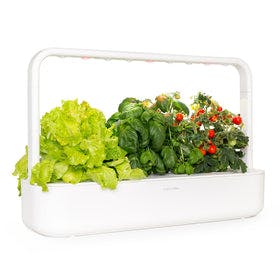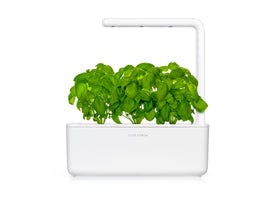
Turning Your Backyard Into a Food Forest
Last Updated: Mar 29, 2025Recently, more attention in the news has highlighted the need to plant trees to help address climate change. Simultaneously, we are learning that we need to change the way we eat and grow our food. What if there were a way for the homeowner to help with both? There is, and a food forest could be precisely what your backyard needs.
Table of Contents
- What is a Forest?
- What is a Food Forest?
- Where Do I Begin?
What is a Forest?
A forest comprises various plants and animals, adapted to particular niches, living in a symbiotic, sustainable community. Our planet has spent 460 million years evolving to maintain a perfect balance of plants and 370 million years on trees. These magnificent forests once covered the majority of the planet but now only comprise just 30 percent. They developed without manufactured pesticides, fertilizers, herbicides, or human-managed monocultures. Their secret? Diversity.

A natural forest typically has seven layers:
- Canopy trees: These are the tallest trees in the woods.
- Small trees / large shrubs: These are interspersed between and below the canopy.
- Shrubs: These are primarily shade-tolerant, woody perennials.
- Herbaceous perennials: These herbs protect the ground layer through self-seeding and spreading (different from woody perennials).
- Ground covers: These are creeping, carpeting plants that form a living mulch along the surface.
- Climbers and vines: These typically require a sturdy tree to climb before they become established.
- Rhizosphere: These are plants with edible roots and can also be for beneficial fungi.
Every one of these layers has its niche, each full of different plants competing and cooperating. Animals and plants further fill in this community, adding in aspects of natural fertilization and pest control. Forests are home to anywhere between 50-90% of the world's land-living biodiversity. Angelo Eliades explains in Permaculture News, forests as "synonymous with life, biodiversity, and fertility."
What is a Food Forest?
Food forests have been used for millennia in tropical regions on grounds as small as 0.25 acres. The Agroforestry Research Trust refers to forest gardens as "a designed agronomic system based on trees, shrubs and perennial plants. These are mixed in such a way as to mimic the structure of a natural forest—the most stable and sustainable type of ecosystem in this climate." A food forest mimics the polyculture design of typical forests, but with more attention paid to the fruit and vegetable-bearing plants. The design aims to produce various fruits, nuts, berries, and herbs, with minimal maintenance.

If we look at a food forest in terms of what edibles you can plant at each layer, we begin to see our options:
- Canopy: Chestnut, Walnut, Apple
- Small trees: Plum, Almond, Peach, Serviceberry
- Shrubs: Blueberry, Blackberry, Gooseberry, Rosemary
- Herbaceous layer: Asparagus, Fennel, Rhubarb, Mint
- Ground cover: Strawberries, Nasturtium, Wintergreen
- Vines: Grapes, Kiwi, Squash, Watermelon, Peas
- Rhizosphere: Carrot, Ginger, Garlic, Potato, Onion, Mushrooms
Where Do I Begin?
It's easy to say "just plant something" when there is plenty of planning that needs to go into your food forest in reality.
Before you begin planning, be sure to check your local forest first. Permaculture zone 5, the wilderness zone, is the best place to observe and learn what species are native and thus have a better chance of survival in your area. The more native species you can incorporate, the less work you will have to maintain the site.
The permaculture apprentice provides a comprehensive list of four steps to the beginning stages.
- What do you want from your food forest?
- Explore, sit quietly, and observe, analyze
- Design—create a layout and choose the plants
- Prepare the site
So, what do you want from your food forest? Curiosity brought you to this article, and interest in forest gardening has kept you here up to this point. What would you say benefits you most about this: food, sustainability, or the fun of gardening? Whatever your interest is, try not to overthink it. This step is more about looking internally to understand why you want to raise a forest in your backyard. Fill in the rest of the sentence: "I want to grow a food forest to (fill in the blank). Examples can include: provide food for my family; create a natural habitat for local species; teach my child about climate change.
Once you have answered that question, now it's time to take advantage of the first permaculture principle: observe and interact. This step takes place both on your property and in any local, national parks or nature preserves. Look for thriving plants and see how they grow together. At this point, you're doing detective work to see what plants naturally guild themselves together. The more guilds and companion plants, the more resilient your site becomes. You may observe how natural forests have lots of woody debris, like snags (standing dead trees) and logs (fallen dead trees). These are crucial to the natural process of the forest, primarily as a natural hotel for countless species. You'll also notice that nature doesn't plant in rows. Straight lines are rare and often short-lived, so be sure to add some of nature's designs (spirals, branches, waves, etc.).
When designing your site, be sure to use your permaculture sectors and zones and be mindful of what plants and animals are already present in the space. First, consider permanent features, including where the water is, current and future structures, and access to the plants you'll eventually be harvesting. From there, you'll want to start small, designing one feature at a time, making sure you have various plants spread across the system.

A sustainable food forest aims to create a mix of support plants and home food production species. Of those natural species, be sure to plant a variety of large and small nitrogen fixers (peas, alders, other leguminous plants) and plants that attract beneficial species (coriander, dill, parsley). Most of the plants in your system will be perennials, so consider how big they will grow and plan for their mature spacing. This is most important with the canopy, ensuring enough light comes through the gaps between mature canopy plant crowns to light your smaller fruit trees.
Finally, it's time to prepare your site. For optimal health, plant your forest in stages, with hedges and canopy trees in the first two years, followed by shrubs and ground cover later. If you're doing this over your old lawn, remember that grass will take nutrients away from young trees. So, mulch around the newly planted trees to ensure the grass doesn't outcompete them. The ground layer will best perform with mycorrhizal inoculate (symbiotic fungi that form at the roots of plants). Adding biomass such as mulch, compost, woodchips, and mushroom inoculate will help with this process.
With proper maintenance over the first few years, the forest will establish and be well on its way to providing fresh food for your family. And while certain nut trees may take as long as a decade to produce their first harvest, the perennial forest can begin producing food within a few years. Berry bushes will come first, and eventually your fruit trees. You can even further fill the in-between space with annual vegetables like kale and chard to take advantage of the open sunlight, thus producing food from year one.
With a watchful eye, this forest garden can stay with your family for generations. Start with a sapling today, and it will grow into a sustainable, bountiful garden your great-grandchildren can enjoy.
Tanner Sagouspe
Tanner Sagouspe has a Masters in Environmental Management and is a Permaculture Designer who promotes tackling the climate crisis at home.










